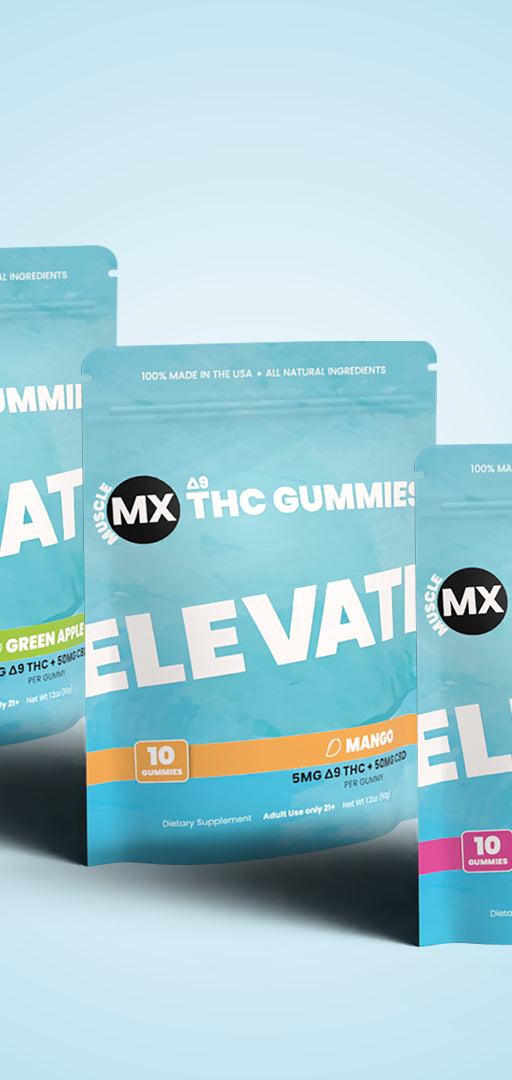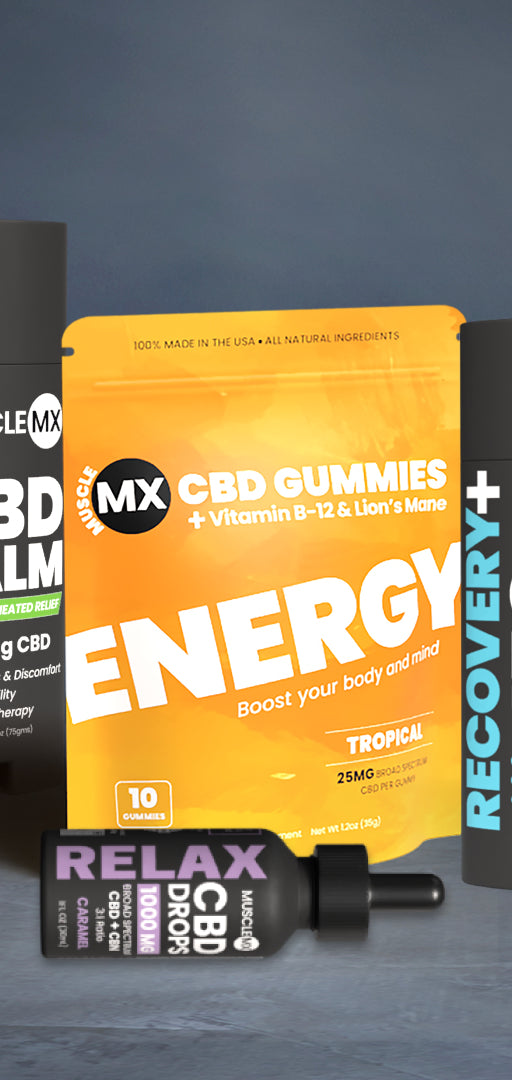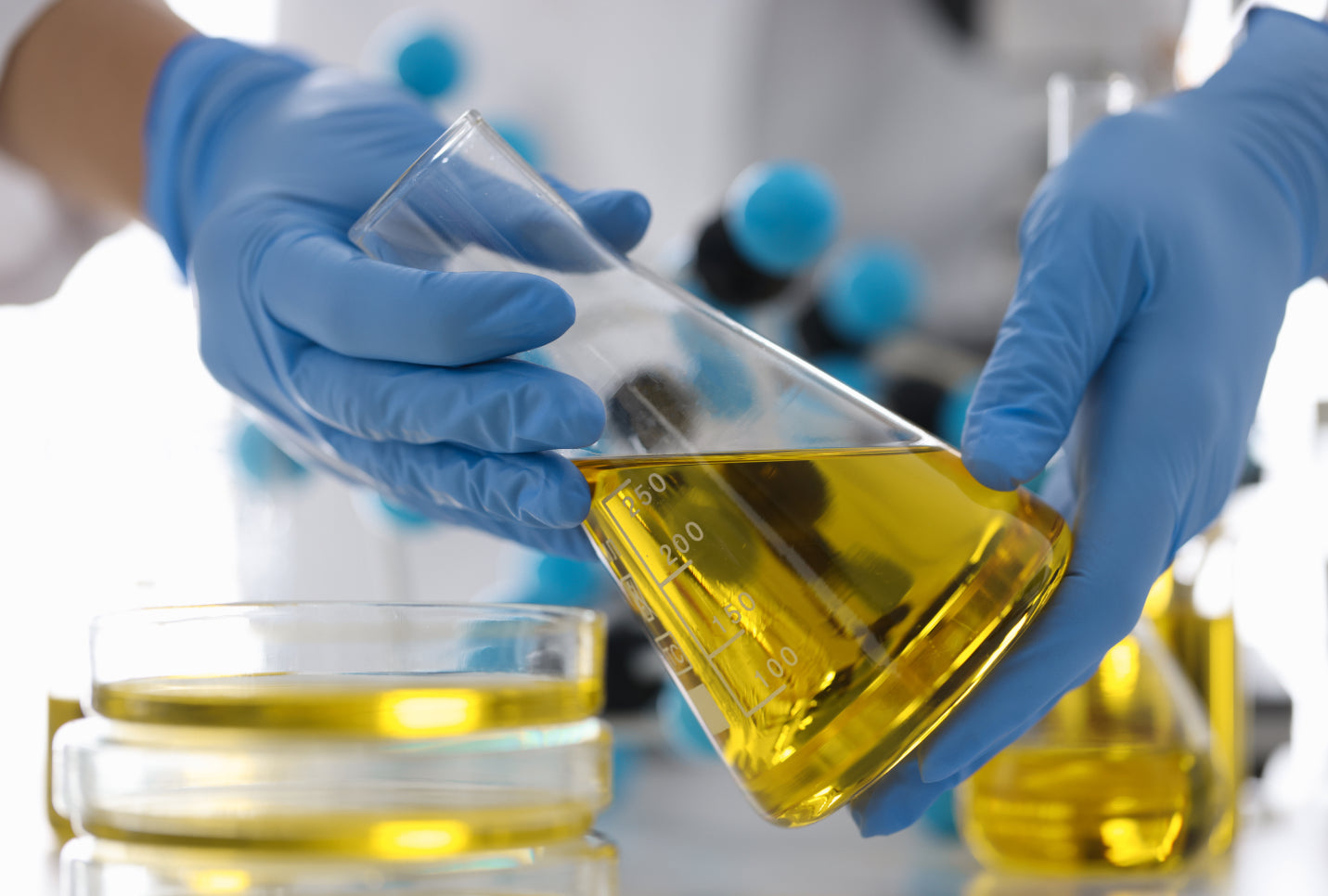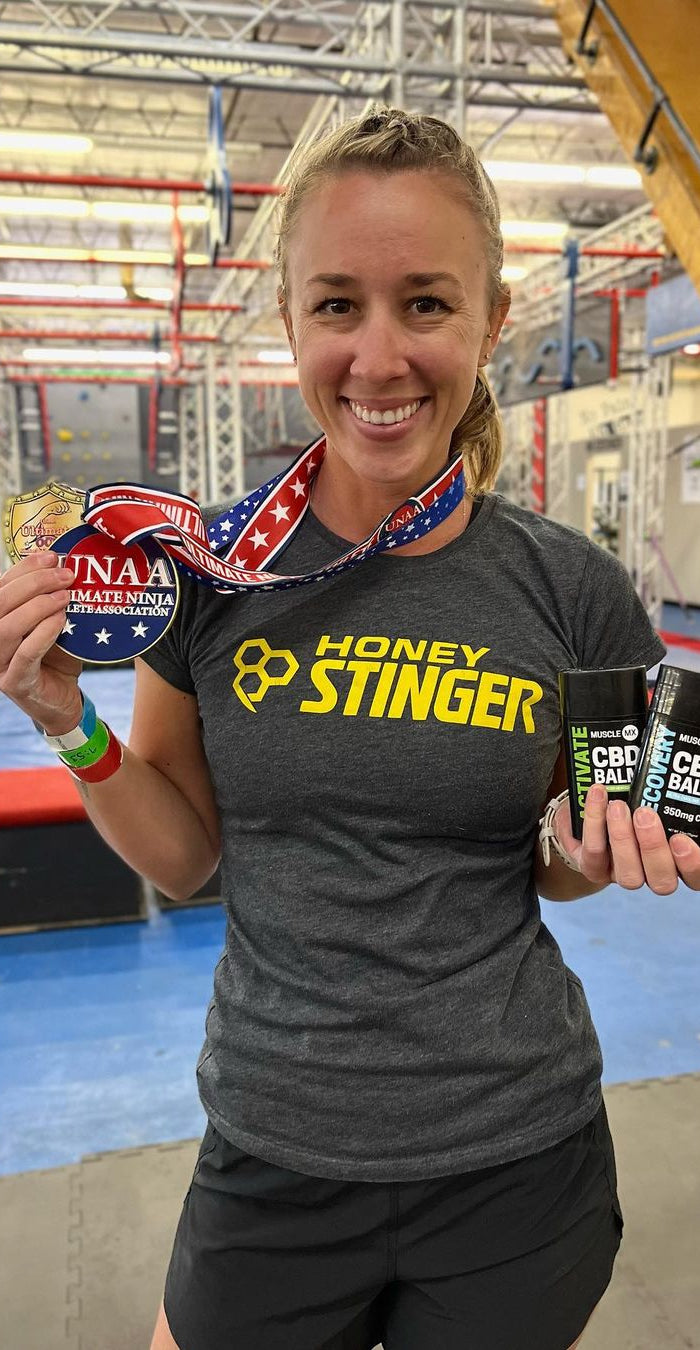How Is CBD Oil Made?
In an era of heightened health awareness, CBD oil has emerged as a popular wellness product. With its potential to support feelings of relaxation and encourage homeostasis, it's not surprising to see why.
But, have you ever paused to consider how CBD oil is made? The process is as intriguing as the product itself. Whether you're new to the CBD scene or a seasoned user, having insights into the extraction and production process can heighten your appreciation of this mighty cannabinoid, and can help you choose the best products for your individual needs.
What Is CBD?
Before we venture into the journey of CBD oil production, let's first clarify: What exactly is CBD?
Cannabidiol, or CBD, is one of many compounds found in the cannabis plant. Unlike THC (tetrahydrocannabinol), another well-known compound from the same plant, CBD doesn't have psychoactive properties. This means it doesn't cause the "high" associated with cannabis.
Instead, CBD is gaining recognition for its potential wellness benefits, from supporting feelings of relaxation to encouraging a good night’s sleep.
Where Does CBD Come From?
CBD’s journey begins within the leaves, buds, and stamps of the Cannabis sativa plant.
Most CBD products you'll encounter are derived from hemp plants, due to their naturally low levels of THC and their legality. The 2018 Farm Bill legalized the cultivation and sale of industrial hemp and their derivatives. This bill made hemp-derived CBD legal, as long as it contains 0.3% or less THC content.
Inside the hemp and other cannabis plants, you'll find numerous compounds known as cannabinoids. While CBD and THC are the most famous, there are over a hundred others, each contributing to the unique properties of the cannabis plant.
It's during the extraction process that these compounds are carefully isolated and captured. The extraction method plays a crucial role in determining the state and quality of each compound, influencing everything from the flavor and aroma of a product (thanks to their terpenes) to its beneficial properties.
With careful, precise extraction methods, the true potential of these compounds can shine through in the final product.
The Role of the Hemp Flower
The journey of CBD from seed to oil is a captivating one. A key step in this process is the use of the hemp flower.
These flowers are where the magic happens — they house the highest concentrations of CBD, as well as a wide range of terpenes, which are compounds that contribute to the plant's aroma and potential wellness properties.
Hemp extract is essentially the raw material derived from these hemp flowers. After the flowers are harvested, they're put through extraction to pull out the beneficial cannabinoids, like CBD. This process results in a potent hemp extract teeming with health benefits, ready to be further refined and transformed into the CBD oil we incorporate into our wellness routines.
Does CBD Contain THC?
One important thing to understand is CBD’s relationship with another cannabinoid found in the hemp plant, THC (tetrahydrocannabinol). While the hemp plant does contain small amounts of THC, the 0.3% legal THC content in hemp is not enough to produce psychoactive effects.
It’s also important to note that the final concentration of THC in a CBD product isn't just determined by the plant it comes from. It can also be heavily influenced by the extraction method and subsequent processing methods used.
This is where the art and science of extraction come into play. Depending on the extraction method chosen, extractors can further reduce or even eliminate THC from the final product as desired.
How Is CBD Extracted From the Hemp Plant?
After the hemp buds and leaves are ready for harvest, the extraction process is nearly ready to begin.
Our first stop in the extraction process is decarboxylation. Despite the complex name, the concept is simple: it's a heating process that "activates" the cannabinoids in the hemp plant.
Why is this necessary? Because it helps convert the cannabinoid CBDA into the CBD we recognize, enabling us to harness its full potential.
Once the decarboxylation process is complete, there are a number of methods we can use to extract cannabinoids from the hemp plant, including CO2 extraction, ethanol extraction, olive oil extraction, and butane extraction.
CO2 Extraction
Also known as supercritical CO2 extraction, this is a technique we at Muscle MX hold in high regard, and we use it for all of our CBD extracts.
CO2 extraction involves the slow, gentle, and deliberate use of supercritical carbon dioxide to separate the desired cannabinoids and terpenes from the plant material. The term “supercritical” refers to CO2's unique state at certain temperatures and pressures, allowing it to behave both as a liquid and a gas.
The beauty of CO2 extraction lies in its unparalleled precision. This method allows us to control with remarkable accuracy which compounds end up in the final product, ensuring the purest and most potent CBD oil.
It's through this method that we can ensure the cannabinoids remain in their most effective and natural form without degrading. Simultaneously, unwanted aspects, such as plant waxes, are effectively removed, ensuring a pure, clean result.
While it requires a significant level of expertise and higher costs, the pure, high-quality product it yields — free from potentially harmful solvents — makes CO2 extraction the gold standard.
Ethanol Extraction
Ethanol extraction is another common method used to extract CBD. In this method, ethanol, a type of alcohol, is used as a solvent to separate the cannabinoids from the hemp plant.
However, ethanol is highly flammable, which can present safety risks. Additionally, it often extracts chlorophyll along with cannabinoids, which can give the final product an unpleasant taste. Ethanol extraction also allows for less control and precision. These reasons make ethanol extraction less desirable compared to CO2 extraction.
Olive Oil Extraction
Another extraction process uses olive oil. It's the oldest method of extraction, and involves heating the plant material to activate the cannabinoids (decarboxylation), then adding olive oil and heating it again.
While this method is safe and inexpensive, it produces a lower concentration of CBD, and the resulting oil is perishable.
Butane Extraction
Finally, there's butane extraction. This method involves using butane as a solvent to extract the cannabinoids. However, any residual butane left in the final product can be harmful to our health, and the process can also destroy some helpful plant waxes.
At Muscle MX, we are committed to providing you with the best, which is why ensure the CBD in our products has been extracted in a way that maximizes its potential while maintaining rigorous safety standards. Your wellness is our mission, and we wouldn't have it any other way.
From Raw Extract to Final Product
A crucial phase in the production of CBD oil is refining the raw extract to the final product. This process involves distillation, which is necessary for the removal of unwanted components such as chlorophyll and waxes. It's like a purification stage, ensuring that the CBD oil you consume is as clean and effective as possible.
In the course of refining the extract, different forms of CBD are produced. One such form is CBD isolate. As the name suggests, CBD isolate is a form of pure CBD oil, isolated from all other compounds. CBD isolate is obtained through additional purification processes that remove all other cannabinoids and terpenes.
On the other hand, we have broad-spectrum and full-spectrum CBD. Broad-spectrum CBD contains all the cannabinoids and terpenes from the hemp plant, except THC. Full-spectrum CBD includes all cannabinoids, including trace amounts of THC. Both forms offer what's known as the entourage effect, where the compounds work together, potentially amplifying the benefits of the CBD.
The Role of the Carrier Oil
Carrier oils play a significant role in CBD products. True to their name, their role is to literally carry the CBD into the bloodstream by supporting our bodies’ ability to absorb it.
This process is essential because CBD is fat-soluble, not water-soluble. In simpler terms, CBD needs to bind to fat to be effectively absorbed by our bodies. Without a fat-based carrier oil, the valuable CBD would just pass through your body, not providing the soothing benefits we all appreciate.
Common carrier oils include MCT oil, hemp seed oil, and coconut oil. Each has its unique nutritional benefits, further elevating the wellness impact of the CBD product.
Ensuring Quality and Transparency
Finally, before a CBD product hits the shelves, it undergoes rigorous lab testing. This step is critical to ensure the product is free from contaminants and meets the high-quality standards set by brands like Muscle MX.
When choosing a CBD product, it's crucial to look for quality, transparency, sustainability, third-party testing, and safe extraction practices. High-quality CBD should be free of heavy metals, pesticides, and contaminants.
We believe in the importance of transparency and that what you put into your body matters. That's why we ensure our products are not only made with clean, natural ingredients, but that our products also undergo third-party lab testing throughout production.
What Are the Different Types of CBD Products?
Now that you understand how CBD oil is made, let's dive into the different types of CBD products available.
CBD Oils and Tinctures
Oils and tinctures like our full-spectrum and broad-spectrum CBD Drops are one of the most common ways to consume CBD. They're easy to use, fast-acting, and the dosage can be adjusted to suit individual needs. You place a few drops under your tongue, hold for a moment, and then swallow.
CBD oil can be used sublingually like a tincture, mixed into food and beverages, or used in cooking. Its versatility contributes to its popularity.
CBD Topicals
Topicals such as soothing balms and skin-supporting lotions are another popular category. The CBD-rich hemp extract is infused into topical forms of lotions, balms, creams, and serums to offer a targeted way to support wellness.
You can apply them directly to the skin, where they interact with the endocannabinoid system to help maintain balance and encourage ease and comfort.
CBD Gummies
CBD gummies are a fun, flavorful, and edible way to enjoy the benefits of CBD. They're portable, discreet, and you don't need to worry about dosage since each gummy comes with a fixed amount of CBD.
Regardless of the form, CBD offers a unique way to support and maintain your wellness, partnering with your body's natural systems to help you feel your best.
The Bottom Line
In this journey from seed to bottle, we've explored how CBD oil is made, the importance of extraction methods, and the various steps involved in ensuring a high-quality final product. At the heart of it all is a commitment to wellness and quality.
As the popularity of CBD continues to rise, it's more important than ever to understand what goes into creating these products. Whether you're a seasoned CBD user or just starting out, knowledge is power, and we’re excited to support you with resources and high-quality wellness products here at Muscle MX.
Sources:
Cannabinoid - an overview | ScienceDirect Topics
Farm Bill | USDA
The Cannabis Terpenes | PMC
Floral Hemp: From the Field and Greenhouse to CBD | USDA
Decarboxylation Study of Acidic Cannabinoids: A Novel Approach Using Ultra-High-Performance Supercritical Fluid Chromatography/Photodiode Array-Mass Spectrometry | PMC










































